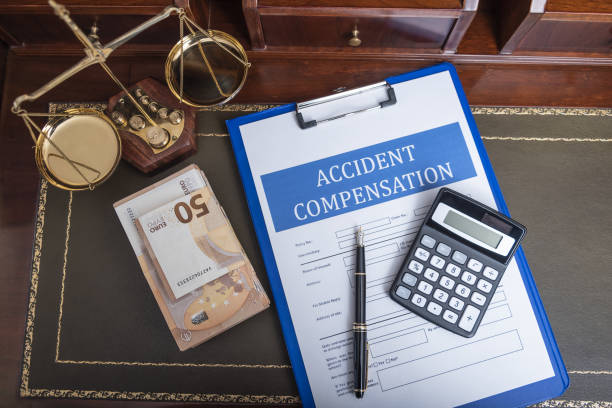Types of Policies and Benefits
General Liability Insurance: Essential Coverage for Comprehensive Business Protection
In the dynamic landscape of business operations, having robust insurance coverage is crucial for safeguarding against unexpected risks and liabilities. General Liability Insurance (GLI) is a fundamental component of a comprehensive business protection strategy, providing essential coverage for a variety of potential issues. This guide explores the key features, benefits, and considerations for General Liability Insurance to help you understand how it can protect your business and ensure long-term success.
1. Understanding General Liability Insurance
a. Definition and Purpose
General Liability Insurance is designed to protect businesses from financial losses resulting from claims of bodily injury, property damage, and other liabilities arising from their operations. It covers a broad spectrum of risks, ensuring that your business is financially shielded against common legal and financial challenges.
b. Key Features
- Coverage for Third-Party Claims: Includes protection against claims made by third parties for injuries or damages caused by your business operations.
- Legal Defense Costs: Covers legal defense costs and settlements or judgments associated with covered claims.
2. Essential Coverage Components
a. Bodily Injury Liability
- Injury Claims: Covers medical expenses and legal costs if someone is injured on your business premises or due to your business operations.
- Accident Coverage: Includes coverage for accidents caused by your business activities, such as slip-and-fall incidents.
b. Property Damage Liability
- Damage to Third-Party Property: Covers the cost of repairs or replacement if your business activities cause damage to someone else’s property.
- Examples: Includes damage caused by accidental spills, equipment malfunction, or operational errors.
c. Personal and Advertising Injury
- Defamation and Libel: Provides protection against claims of slander, libel, or defamation arising from your advertising or business activities.
- Copyright Infringement: Covers legal costs related to copyright infringement claims.
d. Product Liability
- Product-Related Claims: Covers claims related to injuries or damages caused by products your business manufactures, sells, or distributes.
- Product Defects: Includes protection against defects or issues with products that lead to customer harm or property damage.
e. Completed Operations Liability
- Work Done: Covers claims arising from work completed by your business, including any damages or injuries that occur after the job is finished.
- Examples: Includes issues related to construction work, installations, or services rendered.
3. Benefits of General Liability Insurance
a. Financial Protection
- Expense Management: Helps manage the financial impact of legal claims, settlements, or judgments, reducing the risk of significant financial loss.
- Predictable Costs: Provides a predictable monthly premium, allowing you to budget for insurance costs and financial protection.
b. Legal Defense Coverage
- Defense Costs: Covers legal defense costs, including attorney fees, court costs, and other expenses associated with defending against claims.
- Settlement Costs: Provides coverage for settlements or judgments, ensuring that your business is not financially burdened by legal issues.
c. Enhanced Business Credibility
- Client Assurance: Demonstrates to clients and partners that you have adequate insurance coverage, enhancing your business’s credibility and trustworthiness.
- Contract Requirements: Meets contractual requirements that may mandate General Liability Insurance for working with certain clients or partners.
d. Peace of Mind
- Risk Management: Provides peace of mind knowing that your business is protected against a range of potential liabilities and legal issues.
- Operational Security: Allows you to focus on running your business without constant worry about financial risks.
4. Choosing the Right General Liability Insurance
a. Assessing Your Business Needs
- Industry Risks: Consider the specific risks associated with your industry, such as construction, retail, or manufacturing, and choose coverage that addresses these risks.
- Business Size and Scope: Evaluate the size and scope of your business operations to determine the appropriate level of coverage needed.
b. Comparing Policies
- Coverage Limits: Compare coverage limits across different policies to ensure they meet your business needs.
- Exclusions and Endorsements: Review policy exclusions and endorsements to understand what is covered and what is not, and customize coverage as needed.
c. Cost and Affordability
- Premium Costs: Evaluate the cost of premiums in relation to the coverage provided. Choose a plan that offers a balance between affordability and comprehensive protection.
- Deductibles and Co-Payments: Consider deductibles and co-payments associated with different policies to understand potential out-of-pocket costs.
d. Working with Insurance Experts
- Consulting Professionals: Engage with insurance agents or brokers to help you navigate options and select the best policy for your business.
- Policy Customization: Work with experts to customize the policy, including additional coverage options and riders, to suit your business’s specific needs.
5. Conclusion
General Liability Insurance is a critical component of comprehensive business protection, offering essential coverage for a variety of risks and liabilities. By providing financial protection against bodily injury, property damage, and other liabilities, it ensures that your business is safeguarded from unexpected legal and financial challenges. Understanding the key components of coverage, comparing options, and working with insurance experts can help you select the right policy to protect your business and ensure long-term success.


